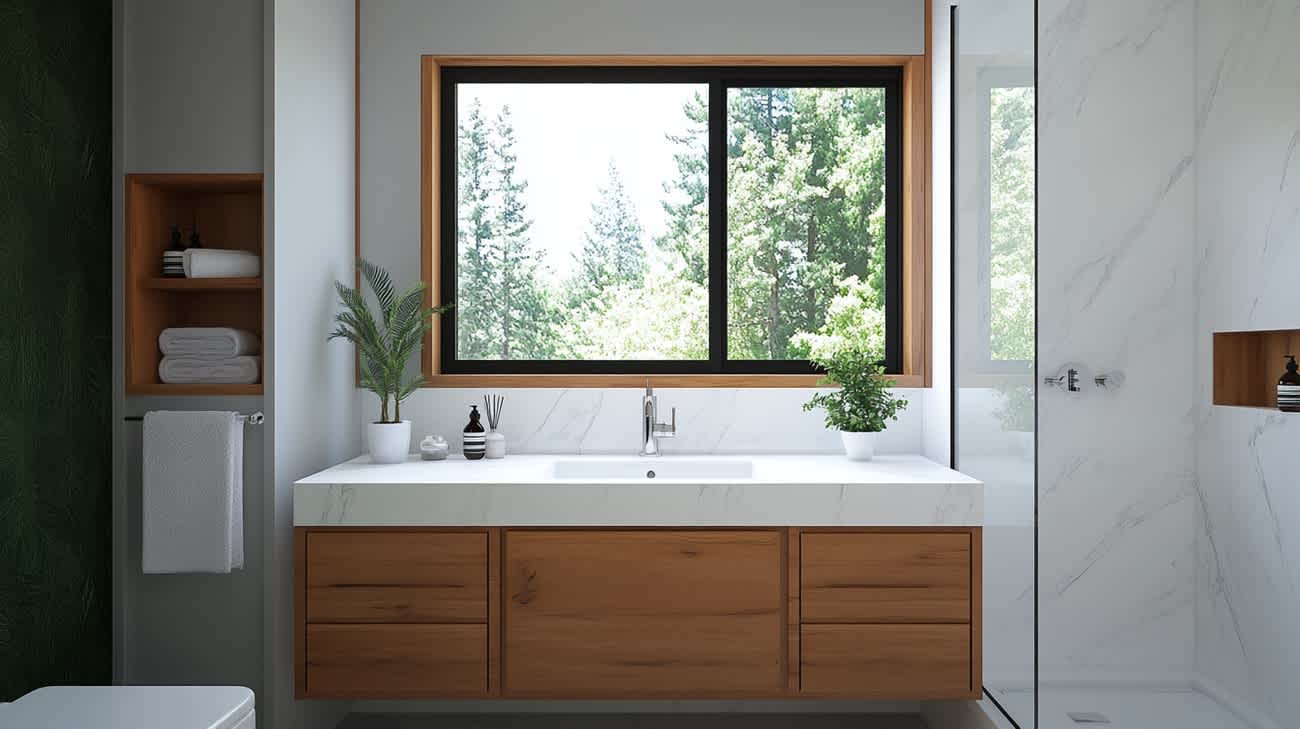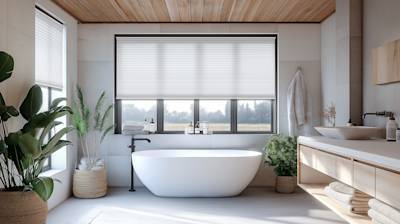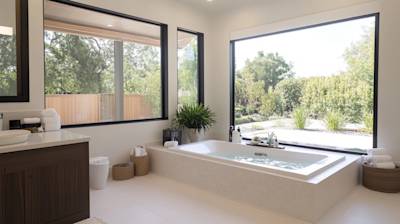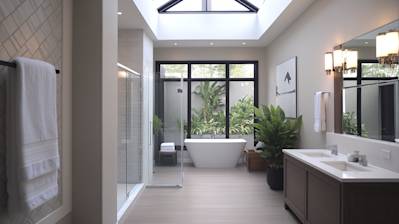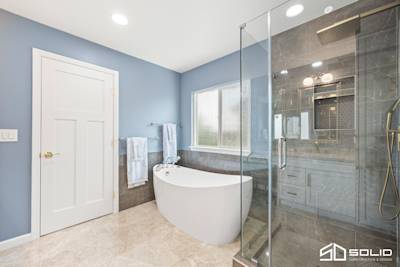Bathroom remodeling efforts revolve around several crucial features: flooring, showers, bathtubs, bath fixtures, etc. But an often overlooked, albeit equally significant feature is the vanity. More specifically, bathroom vanity height.
The One-Size-Fits-All Height? Myth Busted!
The world has long believed a one-size-fits-all bathroom vanity height exists. It doesn't. Gone are the days when 30 to 32 inches was the standard height for bathroom vanities. Today, comfort and functionality rule the roost, creating a wide range of vanity heights available for every person's unique needs.
The Modern Standard: Comfort Height Bathroom Vanities
Comfort height vanities, now considered the new standard, are approximately the same height as kitchen countertops, about 36 inches off the floor. They're intended to create a more comfortable experience since you won't have to stoop over as far.
Bathroom Vanity Height Variations: Suiting Needs for All
While 'comfort height' is fast becoming the norm, vanity heights can still be tailored to individual requirements, taking into account the users' height, physical condition, and personal preference. Ranging between 32 to 36 inches, there's a customizable solution available for everyone:
- For Short Users: Choose vanity heights ranging between 32-34 inches.
- For Tall Users: You can opt for vanity tops reaching up to 36 inches.
- For the Differently-abled or Elderly: Considering ADA (Americans with Disabilities Act) guidelines, the recommended vanity height is 34 inches for ease of accessibility.
Key Elements to Consider While Determining Vanity Height
There’s more to selecting bathroom vanity height than just your physical stature. Here are several factors to think through:
User: Who will be primarily using the vanity? If it's a family bathroom used by both children and adults, a 'comfort height' vanity might be problematic for your little ones.
Purpose: The functionality of your vanity can drive the height requirement. If it doubles as a makeup station, a standard height vanity with a chair could be more comfortable.
Sink Style: The type of sink installed on your vanity affects the overall height you'll want to aim for.
Mirror and Lighting: The vanity mirror and overhead lighting affect how you interact with the space. Too tall a vanity, and you might be standing in shadow.
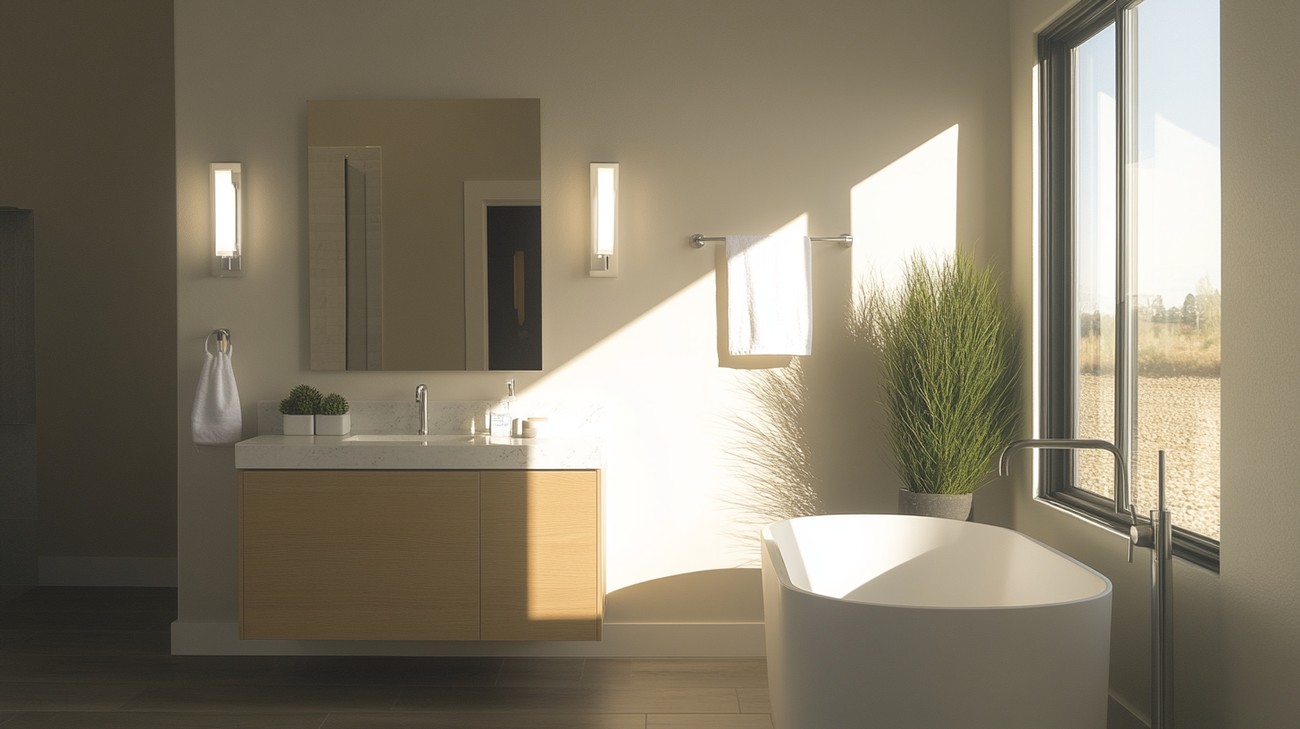
Frequently Asked Questions about Bathroom Vanity Height
2. Why is there variation in bathroom vanity height?
Vanity height varies for many reasons. Taller people may prefer a taller vanity to prevent them bending too much which could cause back pain. For shorter people or children, a shorter vanity may provide better access to the sink and storage areas. The vanity's overall design aesthetic and available space are also factors that contribute to the variations in bathroom vanity height.
3. How do I choose the right bathroom vanity height?
Choosing the right vanity height requires taking into consideration the individuals who will habitually use the bathroom. Keep in mind their height, personal comfort and ease of use. For shared or family bathrooms, the vanity height should be chosen to accommodate the majority of the users comfortably.
4. What is comfort height in bathroom vanity context?
Comfort height bathroom vanities are those vanity models which are designed to reduce undue bending and squatting. These types of vanities generally measure between 35 to 40 inches in height. This is the same height as a standard kitchen counter, designed to accommodate individuals of varied heights.
5. Should I consider ADA guidelines when choosing my bathroom vanity height?
If you expect anyone with mobility impairments to use the bathroom, considering the Americans with Disabilities Act (ADA) guidelines would be beneficial. It recommends a sink height of 34 inches maximum, which includes the height of the vanity plus the sink.
6. Does bathroom vanity height include the sink?
Typically, the bathroom vanity height measurement includes the countertop and the sink. What's important is that the final assembled height is convenient and comfortable for users. For sit-down vanities, the vanity should be around 30 inches tall so that when a vessel sink is added, the total height remains around 36 inches.
7. How does bathroom vanity height affect storage?
The height of a bathroom vanity can affect the amount of storage within the vanity itself. Taller vanities can generally accommodate more drawers and storage space. However, it's important to balance storage needs with ease of access as taller vanities might pose an issue for shorter individuals or children.

Pros of Proper Bathroom Vanity Height
Comfort and Ergonomics
Reduced Strain
When your bathroom vanity is set at an appropriate height, it significantly reduces the strain on your back and neck. Constantly bending over to use a sink that is too low can cause discomfort or even long-term injuries.
Better Accessibility
Higher vanity heights are especially beneficial for taller individuals as it prevents them from having to constantly stoop or bend down, promoting better posture and comfort, particularly during tasks that require a bit more time, such as washing your face or brushing your teeth.
Enhanced Functionality
Added Storage Space
A taller vanity often provides more storage space below the sink, which is particularly useful in smaller bathrooms where storage can be a challenge. You can utilize this space to store toiletries, cleaning supplies, towels, and other bathroom essentials.
Promotes Cleanliness
Heightened vanities also mean that it's easier to clean underneath them. There's ample room to maneuver a mop or vacuum, which in turn promotes a cleaner and more sanitary bathroom environment.
Ample Space for Plumbing
A taller bathroom vanity height allows more space for plumbing. This can make maintenance and repairs much easier, with fewer restrictions to access the pipework.
Visual Appeal
Heightened Elegance
Taller vanities can add a touch of elegance to a bathroom, creating a more luxurious and high-end feel. They provide an opportunity to incorporate different designs and materials that might not work as well on lower units.
Streamlines the Room
Having a bathroom vanity at the right height also harmonizes the overall look and feel of the room. This can effectively enhance the aesthetic value of the bathroom.
Cons of Improper Bathroom Vanity Height
Inaccessibility for Shorter Individuals and Children
Struggle to Reach
If a vanity is too tall, it could be difficult for shorter people or children to comfortably reach the sink or medicine cabinet. This could result in discomfort or even potential accidents.
Need for Stools
In cases where the vanity is excessively high, it may necessitate the use of a step stool. This could create another hazard especially for children or the elderly, and it's another item that might clutter up your bathroom.
Potential for Uncomfortable Usage
Difficult to Use
A bathroom vanity that is too high can lead to uncomfortable use. For example, washing your hands or face at an awkward angle can lead to messy water splashes outside the sink.
Impacts Routine Tasks
A poorly chosen vanity height could make routine tasks such as brushing teeth or washing faces uncomfortable, especially if these tasks are being done for more extended periods.
Aesthetic Imbalances
Visual Disharmony
If the vanity height often does not match with other bathroom elements such as mirrors or wall cabinets, it can create visual disharmony and aesthetic imbalance, thereby spoiling the overall look of the bathroom.
Overwhelms Small Spaces
In small bathrooms, a tall vanity can look overwhelming and out of place, making the space feel smaller and more cramped than it actually is. This could potentially impact the overall comfort and functionality of the room.
Installation and Cost Issues
Difficulty in Installation
Taller vanities might be harder to install, particularly in bathrooms with existing plumbing. This could require more complex and prolonged installation or even professional help, adding to the overall cost.
Higher Cost
Generally, taller or custom-made vanities tend to be more expensive than standard sizes. You might have to invest more money up front, or it may limit the styles and materials available to you if you're working with a tight budget.

Myths and Misconceptions about Bathroom Vanity Height
Bathroom vanity height is an important aspect of a bathroom’s design, both from a functional and aesthetic point of view. There are several myths and misconceptions about bathroom vanity height that can often lead to poor design choices or unnecessary expenses. Let's debunk some of these common misunderstandings.
Myth: One Size Fits All
Misconception: Standard Vanity Height is Suitable for Everyone
One of the biggest myths about bathroom vanity height is that there is a 'standard' height that is perfect for everyone. While there is a commonly accepted height range of about 32 to 36 inches, this doesn't mean it's the best choice for everyone.
Each person's comfort depends on their own height, reach, and other factors such as age or physical ability. A bathroom vanity that is too high can be uncomfortable or even painful for a short person or a child to use, while a vanity that is too low can cause backaches or neck strain for a tall person.
Myth: Higher is Better for Adults
Misconception: The Taller the Vanity, the More Comfortable it is for Adults
A common misconception is that taller vanities, like those at kitchen counter height, are better for adults. However, while a taller vanity can be comfortable for some people, it's not always the best. Again, the ideal height will depend more on the use and the user's height and comfort than on any given standard.
Adopting kitchen counter height for bathroom vanities can be counterproductive; it may be difficult for short individuals, children, and people with certain physical disabilities to use.
Myth: Lower Vanities are Modern
Misconception: A Lower Vanity Height Means a More Modern Design
Another misconceived notion is that lower vanity heights lead to a more modern or minimalist design. While it's true that some modern bathroom designs feature lower vanities, this trend isn't absolute! The suitability of a vanity's height, whether it be lower or higher, depends on who is using it and how it complements the overall bathroom design.
Furthermore, a vanity's aesthetic is also influenced by other factors such as material choice, color, and design features, and not solely its height.
Myth: Adjusting Vanity Height is Expensive and Complicated
Misconception: You Must Stick to Standard Heights to Avoid Extra Costs and Complications
Customizing the height of a bathroom vanity doesn't necessarily mean extravagant costs or complications. In fact, with the wide range of products available on the market today, it's easier than ever to find a vanity of a specific height.
Adjusting the height may even be done as a DIY project with the right tools and knowledge, or as part of a remodel project. It's definitely achievable without breaking the bank or facing unnecessary hassles.
Myth: Vanity Height Doesn't Affect Resale Value
Misconception: The Height of a Vanity Does Not Influence the Property’s Resale Value
It may seem insignificant, but the comfort level of a bathroom can influence how prospective buyers perceive a property. A bathroom vanity that's at an awkward height can be a turn-off, whereas one that's comfortable can stand out as a plus point.
While it's not a massive factor in determining property value, it's still an element that can influence appeal and comfort, making potential buyers see the property as well-tailored to users' needs.
Myth: All Vanities Should be the Same Height
Misconception: Consistency in Vanity Height is a Must
Different bathrooms can have vanities of different heights. The height chosen should primarily focus on user comfort and usage.
For instance, the vanity in a children's bathroom can be lower, while the one in a master bathroom can be higher, customized for adults. You needn't adhere to a 'one size fits all' approach throughout your property.
Overall, when choosing your bathroom vanity height, breaking away from misconceptions and paying attention to individual needs can ensure a more comfortable and suitably designed bathroom experience.
Summary
Ever walked into a home improvement store and felt overwhelmed by all the bathroom vanity options out there? One thing that's incredibly important but often overlooked is the bathroom vanity height. Yep, an unproper height can make your daily routine a miserable experience. If it is too short, you might find yourself hunching over and hurting your back every morning. On the flip side, a vanity that's too high can also be tough on smaller individuals or children.
Just like Goldilocks and her porridge, you’ll want your bathroom vanity height to be just right. Standard heights range around 32 to 36 inches, but it ultimately depends on you and your household’s personal preferences and needs. So next time, when you're shopping for a new vanity, don't forget to take the height into consideration. It's a game-changer, seriously.
At the end of the day, the bathroom vanity height you choose will make a significant impact on the comfort and usability of your bathroom space. Beyond just aesthetics, the right height will make your bathroom tasks a breeze. Always remember, what works for one person may not work for another. And that's where customization comes in - make the choice that best suits your needs and you'll enjoy your bathroom vanity for years to come.
About Solid Construction & Design
Meet Solid Construction & Design, your friendly neighborhood construction and design firm located right in the heart of Sacramento, CA. With expertise spanning beyond a decade, our family-owned business has carved a name for itself in the local construction scene. Setting us apart is our focus on blending beautiful design aesthetics with sturdy, reliable construction – a harmonious marriage of form and function. Whether it's kitchen remodeling or complete home renovation, we bring passion, craftsmanship, and unparalleled customer service to every project. Trust us to transform your living spaces into a work of art that mirrors your identity and stands the test of time.

